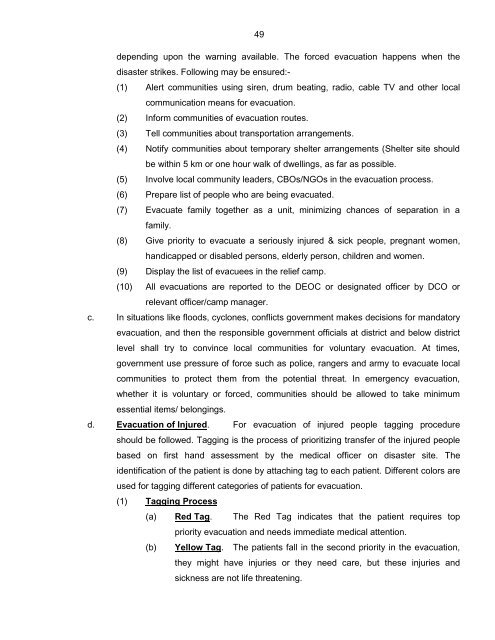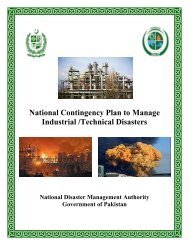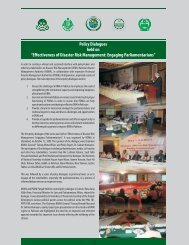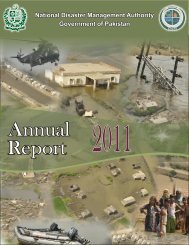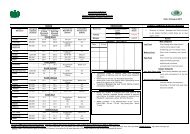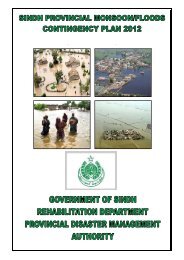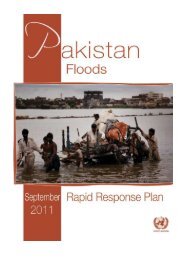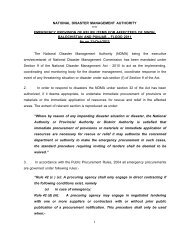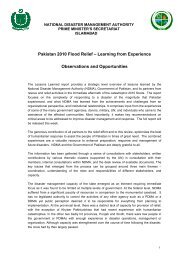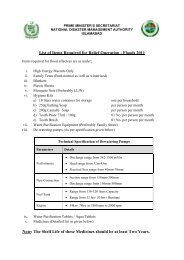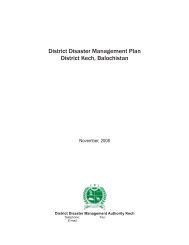National Disaster Response Plan (NDRP) March 2010 - NDMA
National Disaster Response Plan (NDRP) March 2010 - NDMA
National Disaster Response Plan (NDRP) March 2010 - NDMA
You also want an ePaper? Increase the reach of your titles
YUMPU automatically turns print PDFs into web optimized ePapers that Google loves.
49<br />
depending upon the warning available. The forced evacuation happens when the<br />
disaster strikes. Following may be ensured:-<br />
(1) Alert communities using siren, drum beating, radio, cable TV and other local<br />
communication means for evacuation.<br />
(2) Inform communities of evacuation routes.<br />
(3) Tell communities about transportation arrangements.<br />
(4) Notify communities about temporary shelter arrangements (Shelter site should<br />
be within 5 km or one hour walk of dwellings, as far as possible.<br />
(5) Involve local community leaders, CBOs/NGOs in the evacuation process.<br />
(6) Prepare list of people who are being evacuated.<br />
(7) Evacuate family together as a unit, minimizing chances of separation in a<br />
family.<br />
(8) Give priority to evacuate a seriously injured & sick people, pregnant women,<br />
handicapped or disabled persons, elderly person, children and women.<br />
(9) Display the list of evacuees in the relief camp.<br />
(10) All evacuations are reported to the DEOC or designated officer by DCO or<br />
relevant officer/camp manager.<br />
c. In situations like floods, cyclones, conflicts government makes decisions for mandatory<br />
evacuation, and then the responsible government officials at district and below district<br />
level shall try to convince local communities for voluntary evacuation. At times,<br />
government use pressure of force such as police, rangers and army to evacuate local<br />
communities to protect them from the potential threat. In emergency evacuation,<br />
whether it is voluntary or forced, communities should be allowed to take minimum<br />
essential items/ belongings.<br />
d. Evacuation of Injured. For evacuation of injured people tagging procedure<br />
should be followed. Tagging is the process of prioritizing transfer of the injured people<br />
based on first hand assessment by the medical officer on disaster site. The<br />
identification of the patient is done by attaching tag to each patient. Different colors are<br />
used for tagging different categories of patients for evacuation.<br />
(1) Tagging Process<br />
(a) Red Tag. The Red Tag indicates that the patient requires top<br />
priority evacuation and needs immediate medical attention.<br />
(b) Yellow Tag. The patients fall in the second priority in the evacuation,<br />
they might have injuries or they need care, but these injuries and<br />
sickness are not life threatening.


